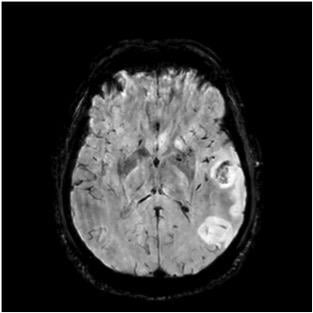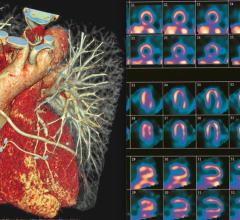
September 28, 2017 — New research revealed that on average, more than 75 percent of people aged 65 and older worldwide are not being screened for atrial fibrillation (AF) and other common stroke risk factors during routine primary care examinations, even though this population is at high risk for stroke.
The “Preventing Stroke: Uneven Progress Report,” released by The Economist Intelligence Unit (EIU), a division of The Economist and sponsored by The Bristol-Myers Squibb-Pfizer Alliance, conducted an analysis of 20 countries and found that efforts to screen people for stroke risk factors including AF and hypertension varied widely, even in countries with established healthcare and developed economies.
“Stroke is the second leading cause of death globally, accounting for 6.2 million deaths,1 but is nearly 80 percent preventable,”2 said Becca Lipman, editor of the EIU’s thought leadership division and of this report. “Our hope is that this research will elevate the awareness and urgency surrounding screening for stroke risk factors including AF and hypertension and offer suggestions on what can be done on a country-by-country level to further improve prevention. There are critical and urgent opportunities to improve screening, so that fewer people suffer the devastating consequences of stroke.”
The report considered policy efforts to assess and reduce risks of stroke across different aspects including awareness, screening practices and policies. Key findings include:
- There is a disconnect between established best practices and everyday clinical practice. For example, there are gaps in the training of healthcare professionals to properly identify and treat stroke risks;
- Screening for AF and hypertension remains low and is not regularly performed in clinical practice; and
- Future policies should focus on strategies to improve awareness of stroke risk factors, implement systematic and/or opportunistic screenings, and include both individual and population-based health-intervention approaches.
“People with AF are at least three times more likely to have a stroke than those without this condition,”3,4,5 said Rory O’Connor, M.D., chief medical officer, Pfizer Internal Medicine. “Even modest improvements in diagnosis and treatment of stroke risk factors including AF – supported by collaborations across healthcare providers, advocates, policymakers and the private sector – could potentially prevent many strokes and related deaths.”6
The EIU developed a scorecard to assess each country’s performance across four different categories and conducted in-depth interviews with experts on cardiovascular health and stroke, which were included in the final report.
For more information: www.eiuperspectives.economist.com
References
1. Top 10 Causes of Death. (webpage) World Health Organization. Accessed on August 10, 2017. http://www.who.int/mediacentre/factsheets/fs310/en/.
2. Myth vs. Fact: Stroke Facts (webpage). National Stroke Association. Accessed on August 10, 2017. http://www.stroke.org/understand-stroke/what-stroke/stroke-facts
3. January, C. T. (2014). ACC/AHA/HRS Guideline for the Management of Patients with Atrial Fibrillation. Circulation, 130, E212-E212. doi:10.1161/CIR.0000000000000041/-/DC1.
4. Wolf PA, Abbott RD, Kannel WB. Atrial fibrillation as an independent risk factor for stroke: the Framingham study. Stroke 1991;22: 983–8.
5. Spodato LA, Cipriano LE, Saposnik G. (2015). Diagnosis of atrial fibrillation after stroke and transient ischaemic attack: a systematic review and meta-analysis. Lancet Neurol 2015; 14: 377–87.
6. Stroke Facts. The U.S. Centers for Disease Control and Prevention (CDC). (webpage) Accessed on August 10, 2017. https://www.cdc.gov/stroke/facts.htm
7. Ben Freedman, Tatjana S. Potpara, and Gregory Y H Lip, "Stroke prevention in atrial fibrillation," The Lancet 388, no. 10046 (2016): , doi:10.1016/s0140-6736(16)31257-0.


 January 23, 2024
January 23, 2024 








